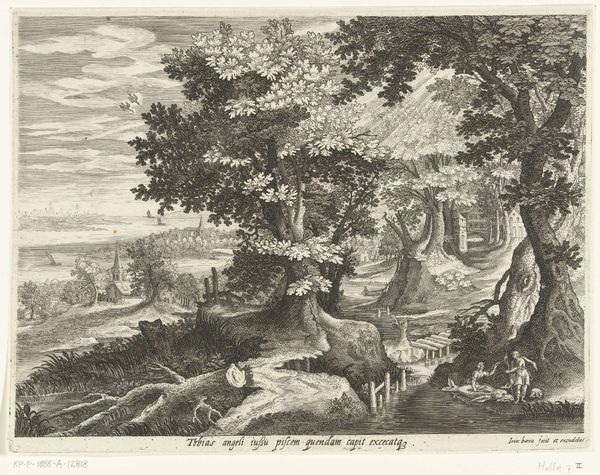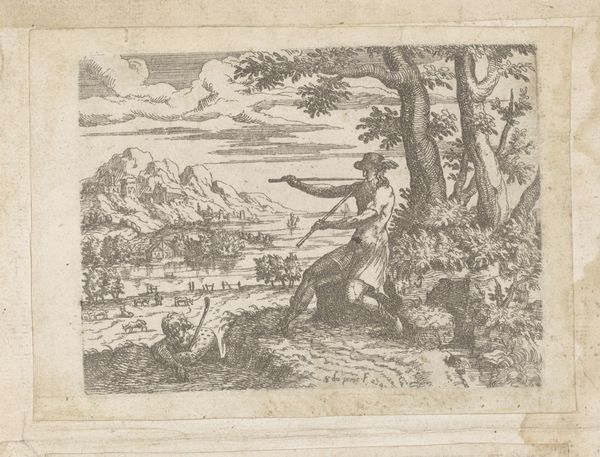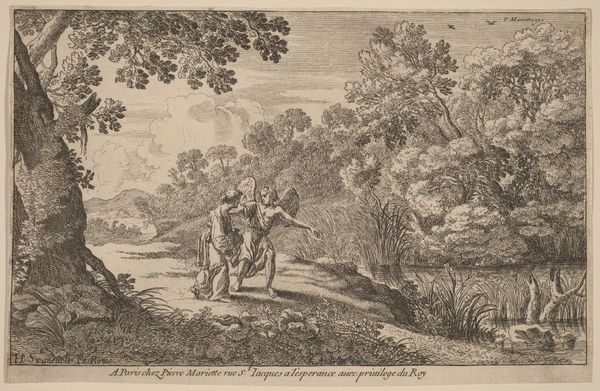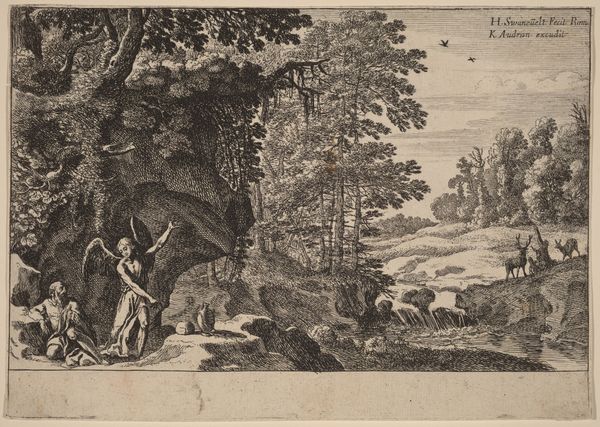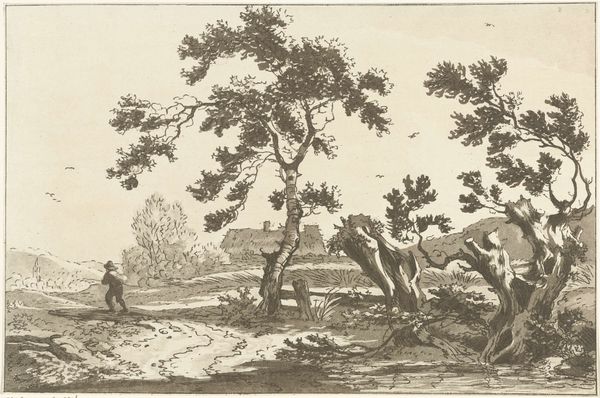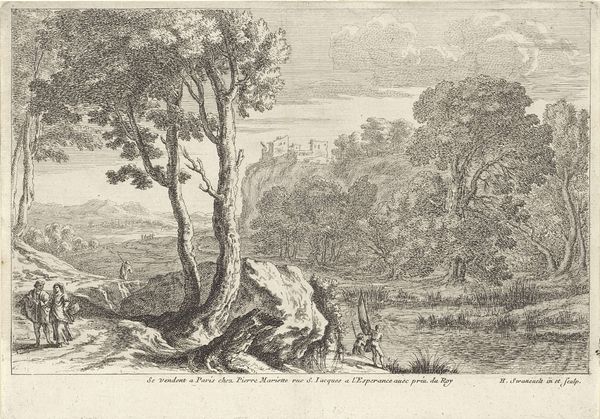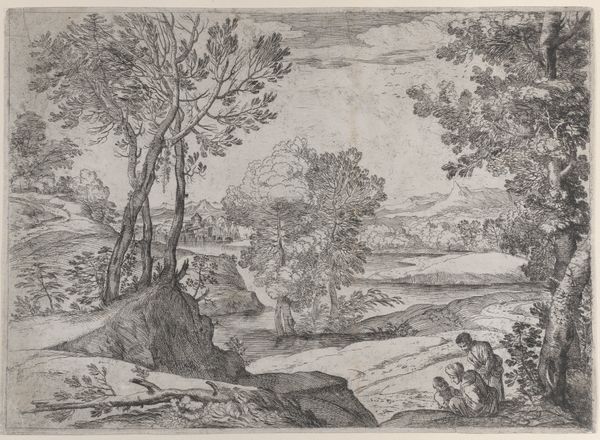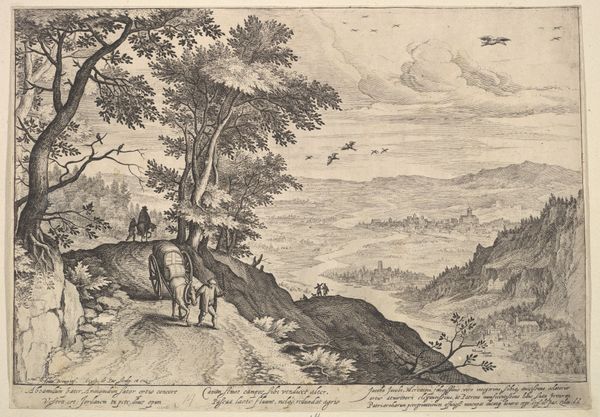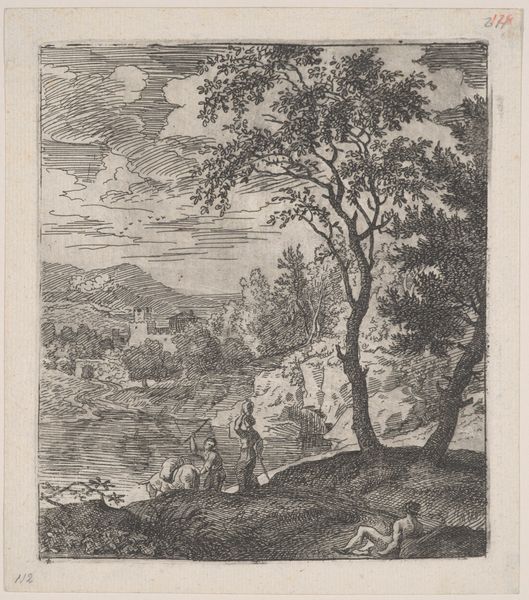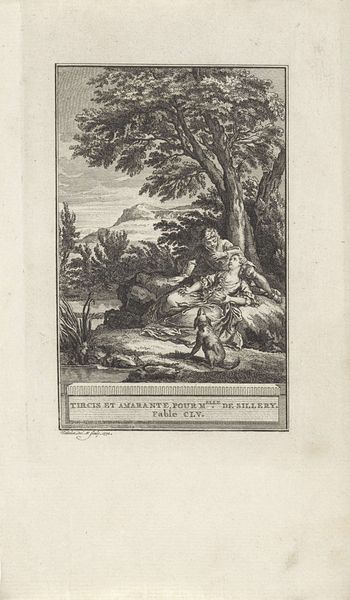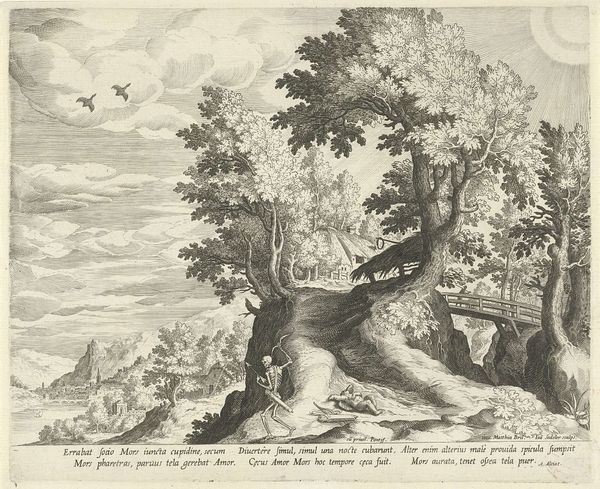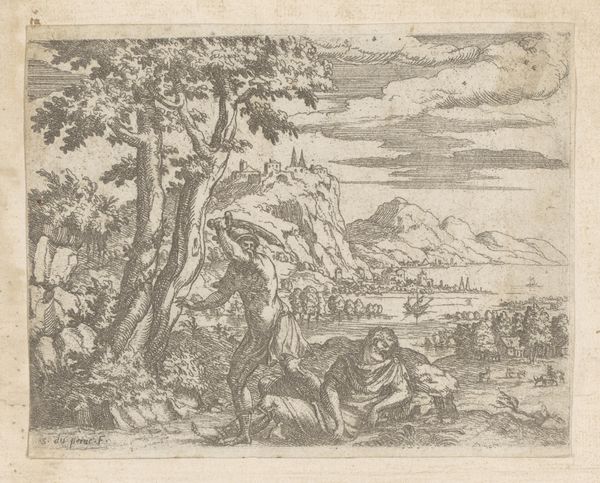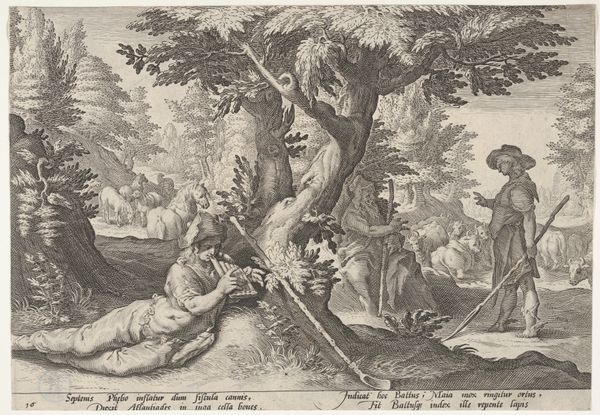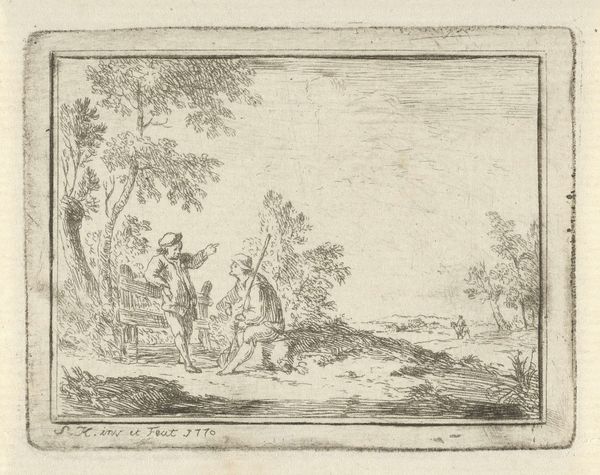
drawing, ink, engraving
#
drawing
#
narrative-art
#
pen drawing
#
pen illustration
#
pen sketch
#
pencil sketch
#
old engraving style
#
landscape
#
mannerism
#
ink
#
geometric
#
history-painting
#
engraving
Dimensions: height 135 mm, width 178 mm
Copyright: Rijks Museum: Open Domain
Curator: Here we have Giovanni Battista Fontana's pen and ink drawing, "Romulus en Remus worden in de Tiber gegooid," dating back to 1572-1573. It depicts a rather pivotal moment, as you might gather from the title. Editor: My immediate impression is one of raw, almost frantic energy. The lines are incredibly fine yet convey a scene of intense action. You can almost feel the cool, damp air and the weight of those figures being carried. What material details particularly strike you about this engraving? Curator: I see how that frenetic style evokes the story. This is no simple abandonment, but a desperate act with momentous implications. The throwing of Romulus and Remus into the Tiber is fraught with symbolic weight – a foundation myth carrying anxieties about lineage, power, and fate. Editor: Precisely. Looking closer at Fontana's engraving, one notes the labor and skill involved. The fine lines would require dedication, with the choice of ink surely intended for the contrast of textures: human skin, drapery, bark of trees, and stone architecture. I see the artistic intention as not only to record an act but to embody it, to leave a tactile record. Curator: And the landscape itself almost echoes the drama unfolding, with its looming city and the implied presence of the wolf, Lupa. The landscape is not merely a backdrop; it's a stage upon which this act of primal violence and subsequent salvation will unfold. A potent emblem of the landscape as active agent in a social process. Editor: That is well stated. I see it not as static representation but active construction; it reminds us of labor and place. Even in this fabricated, carefully constructed image, we feel that sense of making a world. It shows that history is constructed, negotiated, materially worked into existence. Curator: This truly reminds us of the narratives we create and then carry forward to shape identity and meaning across generations. I had not thought so literally of material and action becoming legend. Editor: And perhaps we, too, participating in its retelling, leave our mark. The material world continues and, whether in artifact or experience, we've altered it with our labor, insight, or experience.
Comments
No comments
Be the first to comment and join the conversation on the ultimate creative platform.
